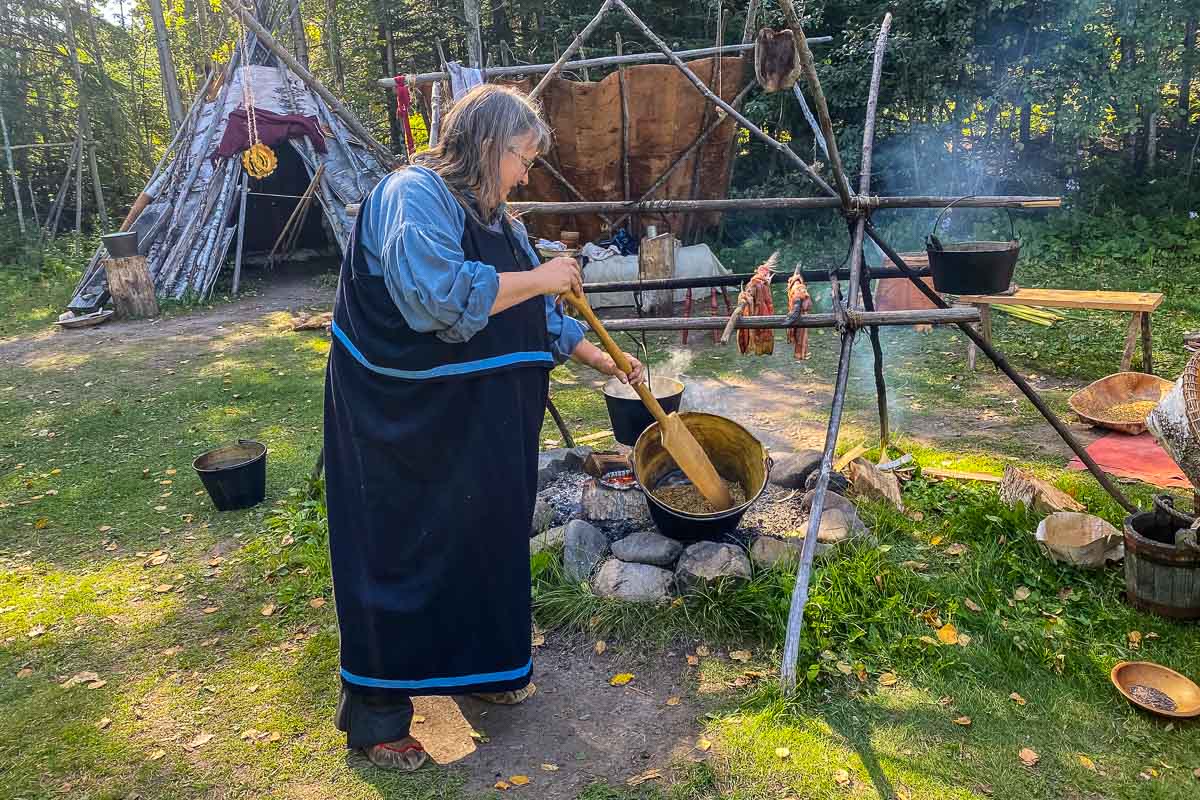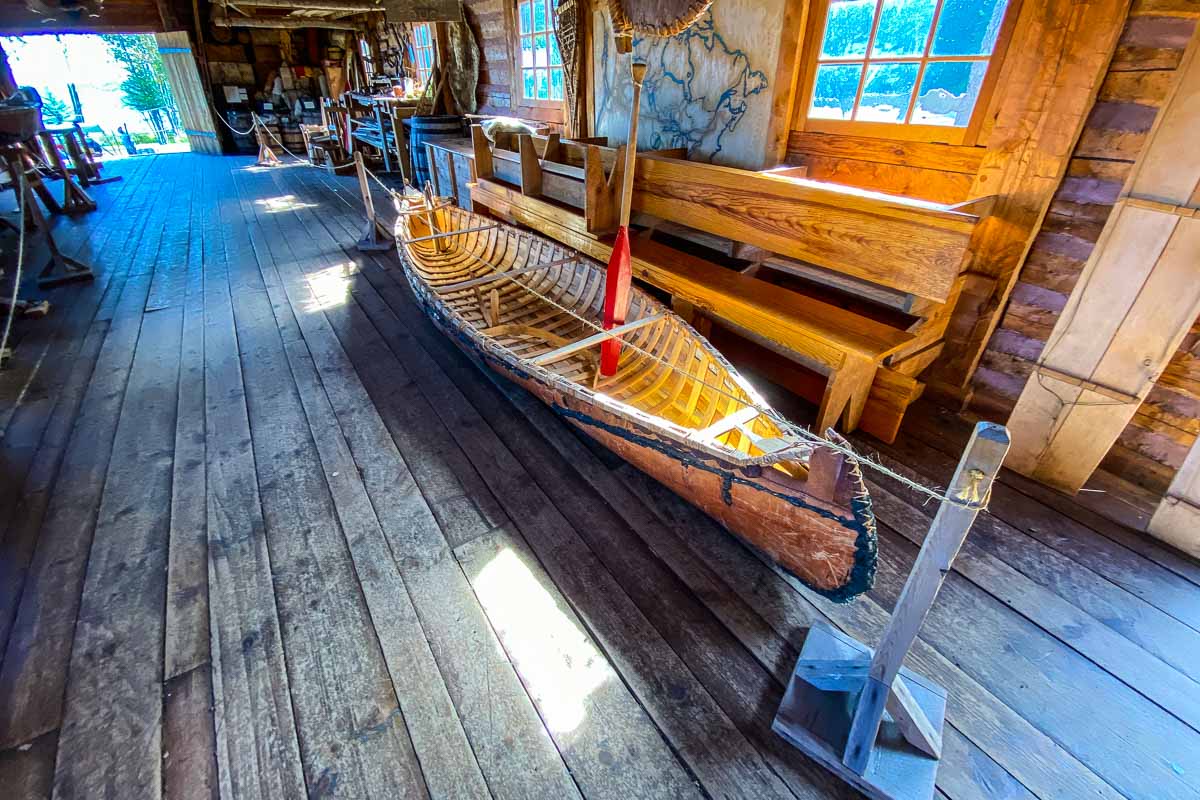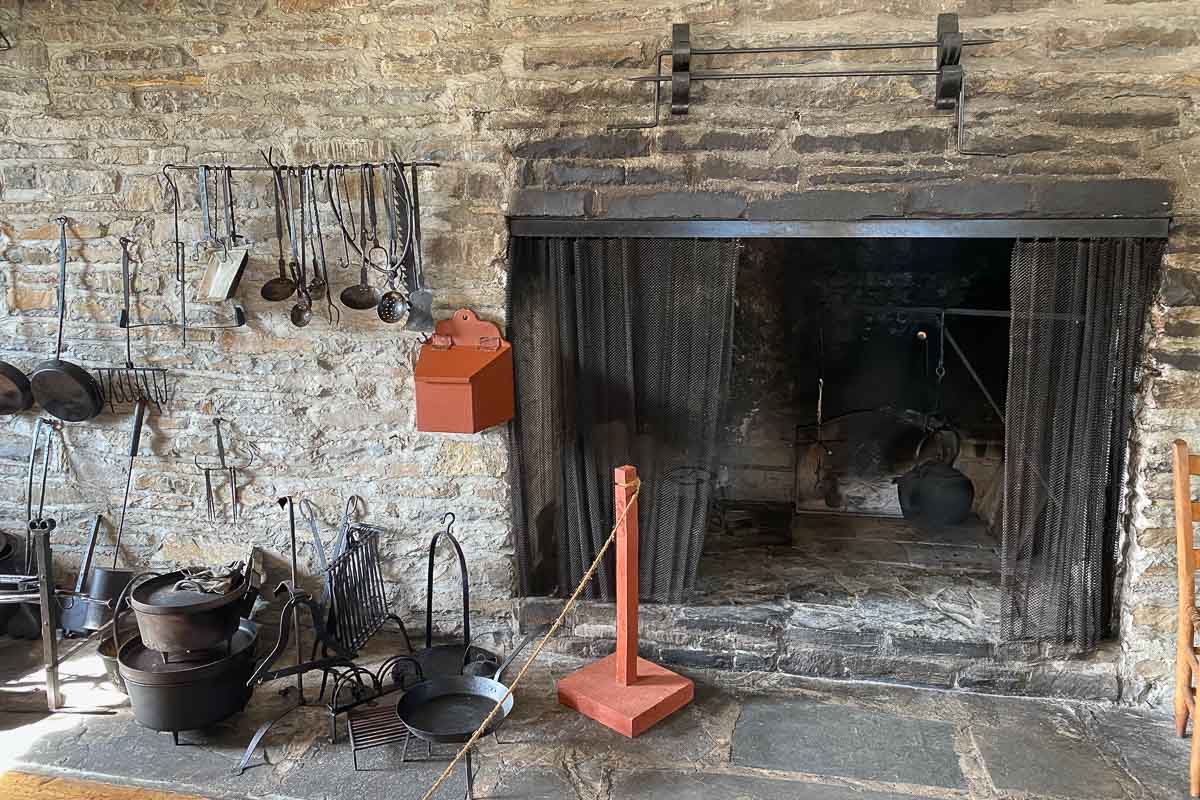
The Grand Portage National Monument is an entertaining and informative journey back into the history of the earliest fur trading economy of Minnesota. From mid May to mid October, costume clad docents will lead your through the reconstructed trading outpost and enlighten you on the earliest encounters between the Ojibwe (Chippewa), the French Canadian Voyageurs, and the English/Scottish Northwest Trading Company–a relationship that lasted from the mid-17th to the early 19th Century.
The Voyageurs (French for travelers) were the hardy French Canadians who braved the winters of western Canada to trap beaver themselves as well as exchange trade goods with Indian trappers. Each spring, as the frozen waters opened, the route from western Canada led through what is now Voyageurs National Park and the Boundary Waters Canoe Area to the Pigeon River that is now the border between the United States and Canada. The last stretch of the Pigeon River in unnavigable by boat, and so the end of the long canoe voyage from western Canada was an 8.5 mile carry around rapids and waterfalls to the shore of Lake Superior. (You can see the highest waterfall in Minnesota at Grand Portage State Park, six miles from the Grand Portage National Monument.
Some posts on MN Trips may contain affiliate links. If you buy something through one of those links, we may earn a small commission. As an Amazon associate, we earn from qualifying purchases.

The post at Grand Portage (which is actually two French words meaning long carry,) became the meeting point for the Voyageurs, the Ojibwe Indians who provided services to the Voyageurs such as food and canoes and furs they had trapped, and the European traders and French Canadians from Quebec (called the Montrealers) who collected the furs and sent them via the Great Lakes and Saint Lawrence to Europe and the fashionable cities of the eastern United States. These meetups of the western Voyageurs and eastern traders usually happened in late May and lasted a few months. In July, the Voyageurs, now loaded with trade goods brought to Grand Portage by the eastern Canadians and Europeans would head west again to repeat the process.
The Ojibwe at Grand Portage provided essential services to the Europeans, especially teaching them to how make birch bark canoes and guiding them through the wilderness. Trade goods received in return included glass beads from Venice and such useful items as woolen blankets, metal cook pots, axes, knives, traps, and guns. And whiskey.

From 1784 to 1803 the North West Company ran the most profitable fur trading business on the Great Lakes. The wealth of the company was reflected in the Grand Portage log palisade, which enclosed a warehouse, a large building that served as the kitchen for the gathered traders, and a great hall which sheltered and fed the Europeans. While the Voyageurs and Montrealers were relegated to camping outside the stockade, the English and Scots of the North West Company lived in relative luxury which included dining on China and glassware brought from home.

The Grand Portage National Monument consists of a visitors center (which is currently closed due to Covid-19 restrictions,) and a stockade and other trading post buildings reconstructed on the post’s original foundations. Also, just outside the stockade’s walls is a reproduction of an Ojibwe camp where you can get demonstrations of everything from drying and smoking fish to gardening and birch bark canoe building.
Within the stockade, there are also guides who are expert on the life of the traders and the workings of the Grand Portage trading post. As is typical of the United States National Park Service, the information available at Grand Portage is extensive, entertaining, and excellently presented.
By the way, the actual end point of the Grand Portage “long carry” was at the trading post at what is now the Grand Portage National Monument. If you like, you can make that Grand Portage hike today. The trail leaves from near the National Monument site and goes that 8.5 miles (13.7 kilometers) to the site of Fort Charlotte.
You can see all my posts from my trip to the North Shore here.
More info from MNTrips
The Grand Portage National Monument is one of six U.S. National Park sites in Minnesota.
Check out our recommendations for what to carry in your hiking day pack when you check out the extensive Minnesota State Park and National Park system.
Some of the links on this page may be affiliate links, which means we may receive a small commission if purchases are made through those links. This adds no cost to our readers and helps us keep our site up and running. Our reputation is our most important asset, which is why we only provide completely honest and unbiased recommendations.
- Birding in Winnipeg - June 24, 2023
- 12 Museums to Visit in the Twin Cities - March 21, 2023
- Crosby Manitou State Park: A Tough Hike - July 27, 2022


